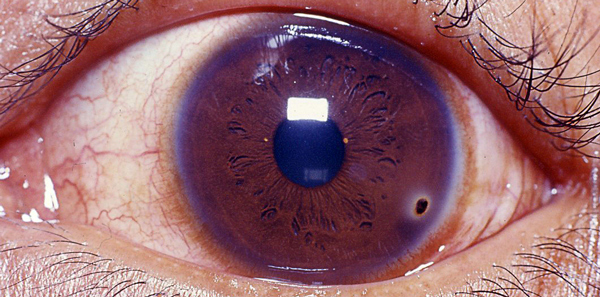1:30min

Image: Margreet Hogeweg
______________________________
By Jeff Megahan
Features Editor
Many optometrists are meeting the requirements of higher paying Medicare items but may not be billing for them.
In this series of articles, we outline some of the Medicare items that often go unclaimed by optometrists because they are unaware of either the item or the billing criteria.
Item 10944
Medicare item 10944: removal of embedded corneal foreign body (CFB) came into effect on 1 September 2015. It carries a full scheduled fee of $72.15 and enables optometrists to claim an 85 per cent MBS fee of $61.35 for the removal of an embedded foreign body from the cornea.
This introduction of this first procedural item for optometrists took eight years of advocacy by Optometry Australia and is recognition of the advances in the scope of practice in optometry.
‘The inclusion of this item number on the Medicare Benefits Schedule represents a win, not just for optometrists but for patients,’ national professional services manager Luke Arundel said. ‘In most locations in Australia, the local optometry practice is the most sensible place to go to have an embedded corneal foreign body removed.’
Required equipment
The foreign body removal should be performed using topical anaesthetic drops (for example, Alcaine, Ophthetic), sodium fluorescein strips, a cotton-tipped applicator, sterile saline fluid for irrigation, a slitlamp, and a device to remove the foreign body: an eye spud or a sterile 25-guage needle.
Billing
In order to properly bill for item 10944, remember to record the nature of the embedded corneal foreign body (for example: metal or plastic), note the location of the embedded CFB (intra-epithelial or sub-epithelial), and describe the method of removal and magnification.
Stipulations
No other Medicare item for optometry can be billed at the same consultation when 10944 is billed. If the embedded corneal foreign body or rust ring has not been completely removed, then item 10916 may be the appropriate item to be billed with 10944 to be used at a later consultation when the remainder of the rust ring has been removed.
Referral
Removal of a foreign body is often straightforward but it’s worth keeping in mind some of the guidelines. In general, optometrists are required to refer a patient for medical attention when it is apparent to them that it would be more appropriate for another medical practitioner to undertake treatment. These circumstances include:
- Penetration of the globe by the corneal foreign body
- Laceration of the cornea or sclera by the corneal foreign body
- When the patient’s pupil is dilated or abnormally shaped
- The presence of blood is detected in the anterior chamber (hyphaema)
- When the optometrist does not feel confident about the procedure.
In these circumstances, the optometrist should refer the patient to an ophthalmologist for emergency treatment or to the emergency unit at the hospital for urgent assessment and treatment.
Removing a corneal foreign body can be very gratifying. The procedure can not only preserve sight and develop a loyal patient following, but help redefine the profession of optometry for the public and fellow health-care professionals.
Medicare billing options
With the Medicare indexation freeze set to continue until 1 July 2019, all practitioners are encouraged to think about more efficient use of their billing options and Medicare items.
The latest MBS schedule, an item use guide with expanded descriptions on utilising the MBS, and other Medicare resources are located on the Optometry Australia website.
Questions on use of the MBS or item interpretation can be directed to Luke Arundel at l.arundel@optometry.org.au or 03 9668 8560.
Let’s talk about MBS item 10943: Children’s vision assessment
Later in this series, let’s talk about …
10945-10948: Telehealth Medicare items